Exercise 32
1. Feria Tercia ante Thome Appostoli
2. Joannes kobilka de Maleschow kmeto interrogatus hic in presencia
3. nostri quia sibi equus quem arestavit apud Stanislaum Stawowi
4. sublatus esset vel potius preditus Respondit quod ipso Die festi
5. Sancte Anne
6. Gregorio
7. Smagacz
8. Eodem
9. Bernhard syodlarz Woythek rzemienyck fideiusserunt pro Marcum
10. Rimanowski quod debet in pace manere cum Laurencio W─ģtropka
11. nec eum quovismodo molestare et prefatus Marcus Rimanowski
12. promittit pro indemnite fideiussoribus sub artificio suo
13. Laurencio
14. V─ģtropka
Principles of transcription
1. Maintain the original entry - carry out the transcription as faithfully as possible to the original, without correcting the writer's mistakes.
2. Lines of text - should be written in lines. If a word is divided between two lines, it should be written as in the original, that is, without connecting it.
3. Punctuation - all punctuation marks or others (e.g. commas, full stops, hyphens, etc.) appearing in the original should be ignored.
4. Pisownia wielkich liter - mechanizm uzna za poprawne wpisanie zarówno małej, jak i wielkiej litery.
5. Shortening - a contraction used by the scribe should be written in full, giving the full sound of the word. Do not use square brackets to designate additional letters, completing the contractions.
6. The letters u and v - In Latin texts they are often exchanged or written in an identical way. While transcribing, the actual phonetic sound of the word should be used.
7. The letter Y - should be written as y. In this case, the principle of writing this letter in Latin texts has been broken, due to the fact that it appears in Polish names and the names of professions (syodlarz ŌĆō siodlarz, Woythek ŌĆō Wojtek, rzemienyck ŌĆō rzemiennik).
┬Ā
You can find the full principles of transcription here.
┬Ā
Helpful tips
1. There are many contractions in this document, and their transcription is helped by knowledge of Latin. Remember that you can find a set of contractions used by the scribe at Used contractions. For general information about the ways of shortening words, check here.
2. The letters d, s and t appear in two versions.
3. In some cases, the letter c may surprise with its shape, as it has sometimes been written by the scribe without care.
4. It is very easy to confuse the letters u and v, their entry is almost identical.
5. The document includes entries written┬Ā in the margins without any direct connection with the text on the lines they are placed next to. Therefore they have been designated as independent lines (designated in red) and should be written separately.
6. The document contains names or professional descriptions from Polish. When transcribing, in this case the principles of transcription set for Polish-language texts are used.
7. The scribe wrote the name Marcus twice in a shortened form, he did it in an identical way, however, in one case, a changed form of the name, that is, Marcum, is hidden under the short form.
┬Ā
You will find more useful tips for transcribing old texts here.
Exercise 32
Model letters







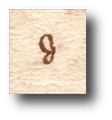



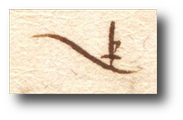


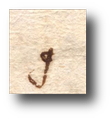
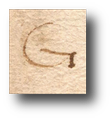




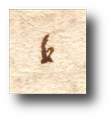

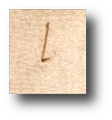

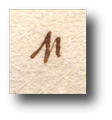








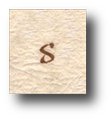









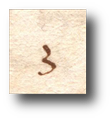
Exercise 32
Abbreviations
![App[osto]li](https://dawnepismo.ank.gov.pl/files/practice/shortcuts/exercise-32/cw32appostoli.png)
![cu[m]](https://dawnepismo.ank.gov.pl/files/practice/shortcuts/exercise-32/cw32cum.png)
![eu[m]](https://dawnepismo.ank.gov.pl/files/practice/shortcuts/exercise-32/cw32eum.png)
![fideiusserru[n]t](https://dawnepismo.ank.gov.pl/files/practice/shortcuts/exercise-32/cw32fideiusserunt.png)
![ip[s]o](https://dawnepismo.ank.gov.pl/files/practice/shortcuts/exercise-32/cw32ipso.png)
![mane[re]](https://dawnepismo.ank.gov.pl/files/practice/shortcuts/exercise-32/cw32manere.png)
![Mar[cum]](https://dawnepismo.ank.gov.pl/files/practice/shortcuts/exercise-32/cw32marcum.png)
![Mar[cum]](https://dawnepismo.ank.gov.pl/files/practice/shortcuts/exercise-32/cw32marcum2.png)
![p[re]ditus](https://dawnepismo.ank.gov.pl/files/practice/shortcuts/exercise-32/cw32preditus.png)
![p[rese]ncia](https://dawnepismo.ank.gov.pl/files/practice/shortcuts/exercise-32/cw32presencia.png)
![que[m]](https://dawnepismo.ank.gov.pl/files/practice/shortcuts/exercise-32/cw32quem.png)
![qu[ia]](https://dawnepismo.ank.gov.pl/files/practice/shortcuts/exercise-32/cw32quia.png)
![q[uo]d](https://dawnepismo.ank.gov.pl/files/practice/shortcuts/exercise-32/cw32quod1.png)
![q[uo]d](https://dawnepismo.ank.gov.pl/files/practice/shortcuts/exercise-32/cw32quod2.png)
![quovismo[do]](https://dawnepismo.ank.gov.pl/files/practice/shortcuts/exercise-32/cw32quovismodo.png)
![S[an]cte](https://dawnepismo.ank.gov.pl/files/practice/shortcuts/exercise-32/cw32sancte.png)
![Stanislau[m]](https://dawnepismo.ank.gov.pl/files/practice/shortcuts/exercise-32/cw32stanislaum.png)
